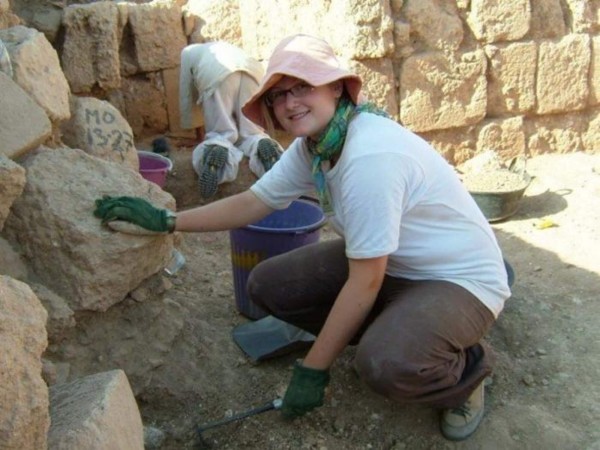
Dr. Sophie Lund Rasmussen at the excavation site. (Credit: Sophie Lund Rasmussen)
Ishtartv.com – studyfinds.org
OCTOBER 8, 2023
OXFORD, United Kingdom — A unique
clay brick, originating from the ancient city of Kalhu, contains plant DNA from
almost 3,000 years ago. Currently located at the National Museum of Denmark,
the brick bears a cuneiform inscription – an ancient writing system –
indicating that it was “The property of the palace of Ashurnasirpal, king of
Assyria.” This allowed researchers to date the brick accurately to between 879
BCE to 869 BCE.
The brick comes from the palace of the Neo-Assyrian king Ashurnasirpal
II. This historic site, recognized today as the North-West palace in Nimrud in
modern-day northern Iraq, began its construction around 879 BCE.
In 2020, during a digitalization project at the museum, researchers
delved into the brick’s inner core, where there was minimal risk of DNA
contamination. By adapting methods previously used for porous materials like
bone, the team extracted DNA. Their analysis identified 34 plant groups, with
the most abundant being Brassicaceae (cabbage) and Ericaceae (heather). Other DNA
sequences linked to Betulaceae (birch), Lauraceae (laurels), Selineae
(umbellifiers), and Triticeae (cultivated grasses) families.
Collaborating with assyriologists, archaeologists, and geneticists,
University of Oxford researchers compared their findings to modern botanical
records from Iraq and ancient Assyrian plant descriptions. The brick, primarily
made of mud from the local Tigris River mixed with chaff, straw, or dung, was
molded and inscribed with cuneiform. It was sun-dried and not burned, helping
preserve the genetic material within.
“We were absolutely thrilled to discover that ancient DNA, effectively
protected from contamination inside a mass of clay, can successfully be
extracted from a 2,900-year-old clay brick,” says study first author Dr. Sophie
Lund Rasmussen, from the Wildlife Conservation Research Unit in the Department
of Biology at Oxford, in a university release. “This research project is a
perfect example of the importance of interdisciplinary collaboration in
science, as the diverse expertise included in this study provided a holistic
approach to the investigation of this material and the results it yielded.”
The study’s implications go beyond this one single brick. Such research
can be applied to other archaeological clay sources globally, identifying past
flora and fauna. Given that clay materials are commonly found in archaeological
sites worldwide and can often be precisely dated, they present unique
opportunities.
While this study focused on plant DNA, all types of taxa, including
vertebrates and invertebrates, could potentially be identified. Recognizing
ancient biodiversity can provide invaluable insights into current biodiversity
losses and offer a deeper understanding of ancient civilizations.
“Because of the inscription on the
brick, we can allocate the clay to a relatively specific period of time in a
particular region, which means the brick serves as a biodiversity time-capsule
of information regarding a single site and its surroundings,” says study first
author Dr. Troels Arbøll, a junior research fellow at Faculty of Asian and
Middle Eastern Studies at Oxford. “In this case, it provides researchers with a
unique access to the ancient Assyrians.”
The study is published in the journal Scientific Reports.
|